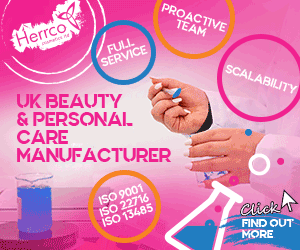In vivo tests have been conducted on 63 cosmetic ingredients since the European Union ban on the testing of cosmetics on animals came into effect, according to new research.
The animal tests in question were imposed to meet the requirements of the EU chemicals regulation REACH.
While no cosmetic ingredient can be used in the EU if it has been tested on animals to meet the requirements of the EU Cosmetic Products Regulation 1223/2009 anywhere in the world, REACH requires specific human and environmental safety data to be included as part of the registration package, which may involve the collection of new data using animal tests.
As detailed in a new report called ‘Continuing animal tests on cosmetic ingredients for REACH in the EU’, published in Alternatives to Animal Experimentation, researchers examined REACH dossiers for chemicals for which the only reported use is cosmetics to determine the extent of new in vivo testing to meet REACH requirements.
The REACH database includes 3,206 chemical dossiers with cosmetics as a reported use.
Of these, 419 report cosmetics as the only use and, of these 419, a total of 63 had in vivo tests completed after the Cosmetic Products Regulation ban on animal testing for cosmetic final product and ingredient safety assessments came into force.
According to the authors, who include representatives from the Center for Alternatives to Animal Testing Europe, White Rabbit Beauty, regulatory compliance firm Knudsen & CRC and chemicals giant Clariant, registrants largely used alternative, non-animal methods to evaluate ingredients for REACH, but some still conducted new in vivo tests to comply with REACH requirements for toxicity data and worker safety assessments.
In some cases, the European Chemicals Agency (ECHA), which evaluates the dossiers, rejected registrants’ alternative methods as insufficient and requested new in vivo tests.
A recent high-profile case of this nature involved the supplier Symrise who lost an appeal against the ECHA’s decision on two of its cosmetics use only ingredients in 2020.
The newly-published manuscript notes that REACH tests on cosmetic ingredients appear only as “industrial chemicals legislation” tests in EU reports.
Given the topic’s importance to consumers and the cosmetics industry, the authors asked that the public be made aware of REACH testing until the ‘conflict’ between the regulations is resolved.
The ban on animal testing of cosmetic ingredients in the EU came into effect in March 2009, while the marketing ban – to ensure that ingredients cannot be tested anywhere in the world to meet the requirements of the EU Cosmetics Regulation – was enforced from March 2013.
UK industry appeals to government
In similar news, companies involved in the UK cosmetics industry have joined with animal protection NGO Cruelty Free International to issue a letter to Home Secretary Priti Patel demanding that the UK upholds its cosmetics animal testing bans and urging her to rule out new cosmetics tests on animals.
The move follows the Home Office's admission in a letter to Cruelty Free International that it had reconsidered its policy in cases where testing could be deemed necessary to meet the needs of chemicals regulations – in this instance, the country's own post-Brexit REACH system, called UK REACH.
More than 75 companies, including Unilever, Avon, Boots, Waitrose and the Co-op signed the letter, urging the government “to uphold its 1998 position as intended, with no new tests on animals allowed”, adding that the UK would be pursuing a “retrograde approach” whilst failing “to acknowledge the amazing advances in science and technology”.
The UK was the first country in the world to ban animal testing for cosmetics and their ingredients when it put in place a policy ban in 1998.




